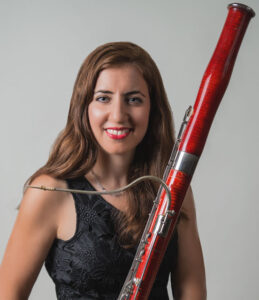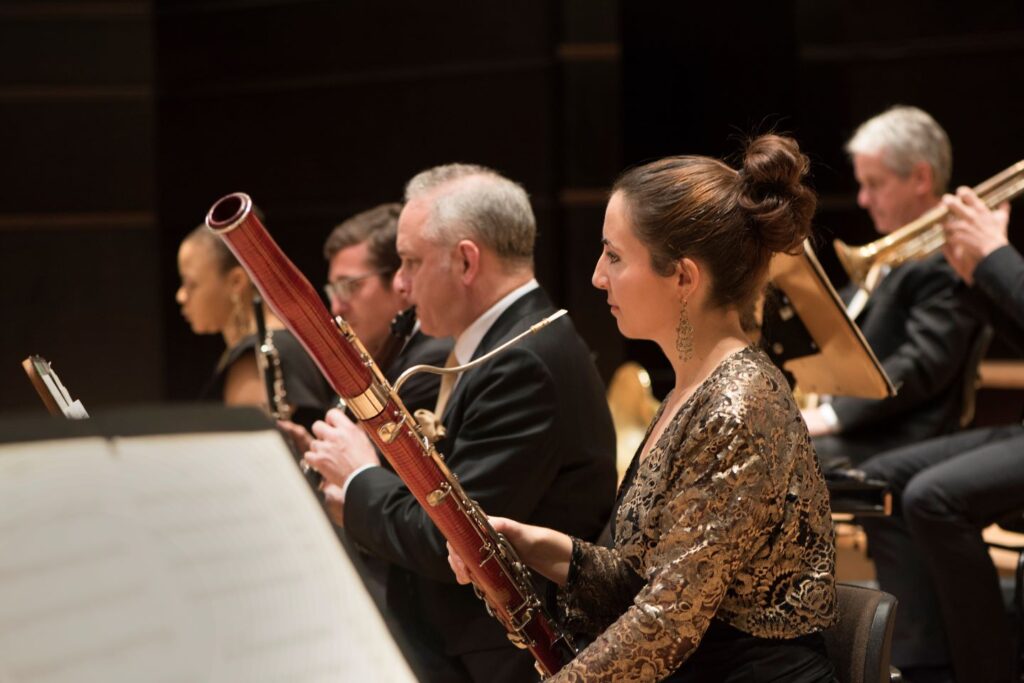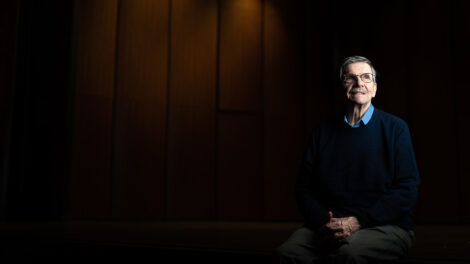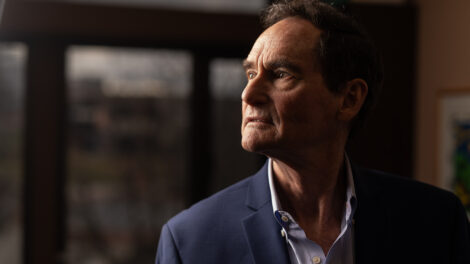Williams Center at 40 series continues with Orpheus Chamber Orchestra
By Bryan Hay
Orpheus Chamber Orchestra made its Williams Center for the Arts debut on Nov. 12, 1987, performing Symphony No. 80 in D minor by F.J. Haydn, Concerto No. 3 for Horn and Orchestra by W.A. Mozart, Serious Song, a Lament for String Orchestra by Irving Fine, and Symphony No. 1 in C Major by Bizet.
The hard-to-resist meat-and-potatoes program christened what would become an extended residency at Lafayette for the Grammy award-winning orchestra, founded in 1972 by cellist Julian Fifer, along with musicians who aspired to perform orchestral chamber repertory through their own close collaborative efforts and without a conductor.
Contemplating an idea for an orchestral residency, Ellis Finger, the first director of Williams Center, cold-called Orpheus in 1985 to inquire about its interest in establishing a relationship with the College’s new arts center.
“Can I get back to you on that?” came the answer, “usually the kiss of death in the arts world,” Finger said in 2004 during the season that marked Orpheus’ 50th performance at Williams Center.
“After some breathless moments of excitement, it started with a two-season courtship that evolved into a marriage,” he said at the time.
A stroke of programming panache by Finger, the residency has graced Lafayette and concert goers throughout the region with memorable performances by Gil Shaham, Emanuel Ax, Jeffrey Kahane, Branford Marsalis, Mischa Maisky, James Galway, and Arturo Sandoval, among many other celebrated guest artists.
Finger’s timing couldn’t have been better as the New York-based Orpheus was seeking a situation where they’d get on a bus at 4 p.m., go to a site, and be back home by midnight. Williams Center offered the perfect geography for that to happen.
Williams has provided Orpheus with the ideal location to road test its programs before presenting them at its home at Carnegie Hall. Under Finger’s tenure, Orpheus would go on to perform three concerts per season, often bringing along to Easton classical music stars at no additional cost; the relationship continues as Williams Center celebrates its 40th anniversary.
Gina Cuffari, one of Orpheus’ current artistic directors and its co-principal bassoonist, stepped away from her performance and teaching schedule recently to talk more about the Orpheus-Lafayette connection.
Let’s just jump in. What has the Williams Center residency meant to Orpheus over the years?
It means many things to all of us at Orpheus. The Williams Center is really our second home. Aside from Carnegie Hall, it is our most frequented performance hall. We’ve played there more than 90 times, which is quite astounding when you think about it.

Gina Cuffari (Photo by Tom Cuffari)
As an unconducted orchestra, it’s difficult to get up on stage and play a new program for the first time. Williams Center has provided us with an opportunity to perform and perfect many of our programs before we play them anywhere else—whether that’s at Carnegie Hall or in venues on a domestic or international tour. It’s a friendly, welcoming environment—we know that the Williams Center audience will embrace us even if we feel nervous for a first run!
We’ve also premiered a countless number of works for audiences at the Williams Center over the years. It’s certainly exciting to bring a new work of art into being, and to do that repeatedly for the audience at Lafayette is quite extraordinary. Audience response to a first performance of a new piece or arrangement is helpful information for us. It can determine the changes or adjustments we need to make before the next presentation. Some works that we’ve premiered at Lafayette are brilliant pieces that enjoy a long life after that first performance.
Can you describe what it’s like to perform in such an intimate space?
For a chamber orchestra, it’s an ideal venue. We really feel the connection with the audience during our performances. There’s an energy exchange that happens between the musicians and the Williams Center audience that is palpable—and it’s very special for us as performers. It’s different from playing at Carnegie Hall, which is a vast space with a massive stage. Carnegie is special for other reasons. But at Williams Center, being able to see the audience’s faces and facial reactions radiating positivity and excitement during a performance is encouraging and invigorating for us.
What was your most memorable Williams Center performance?
What stands out for me is the December 2008 performance with sitar virtuoso Anoushka Shankar, who performed a new concerto written for her by her father, Ravi Shankar. The collaboration with Anoushka was wonderful. She’s a lovely person with a joyful nature and collaborative spirit, and I remember these traits clearly being expressed in her performance. The intimate nature of Williams Center enabled the audience (and the orchestra) to savor the unique sounds and sights of the sitar up close.

Gina Cuffari performing with Orpheus Chamber Orchestra (Photo by Neda Navaee and courtesy of Orpheus Chamber Orchestra)
It’s rare to juxtapose an Indian classical instrument with a western European classical ensemble —timbre, tuning, and the melodic and harmonic language are very different for each. We Orpheus musicians had to open our ears and broaden our musical sensibilities to make this collaboration work, and we did! I love that this ensemble is always willing to stretch ourselves and venture into new musical territory. For me, this was one of the first times playing with this ensemble that I truly felt proud of not only our music-making, but also the boundary-pushing artistic vision of the ensemble. I was honored to be part of it.
Can you describe the conversations among the orchestra members as you get ready to come to the Williams Center? Is there a sense of a homecoming?
We are always thrilled to see the Williams Center on our concert calendar, especially if it’s one of our first concerts of a new program. It is such a familiar venue by this point, that there’s almost a collective sigh of relief—we know exactly how to prepare for the hall. In every venue, the space and acoustics are different. Therefore, in a new hall we have to spend a lot of time rehearsing, adjusting, and listening in order to achieve the best sound and balance for the performance. It can be very challenging. It’s always comforting to return to Lafayette because we know exactly what to expect—the wonderful audiences, the intimate space, the familiar acoustics—and we know that the atmosphere will be familial and inviting. It truly feels like home.
Next up for this yearlong series of articles celebrating Williams Center’s 40th anniversary: Ty Furman, director of the Performance Series

